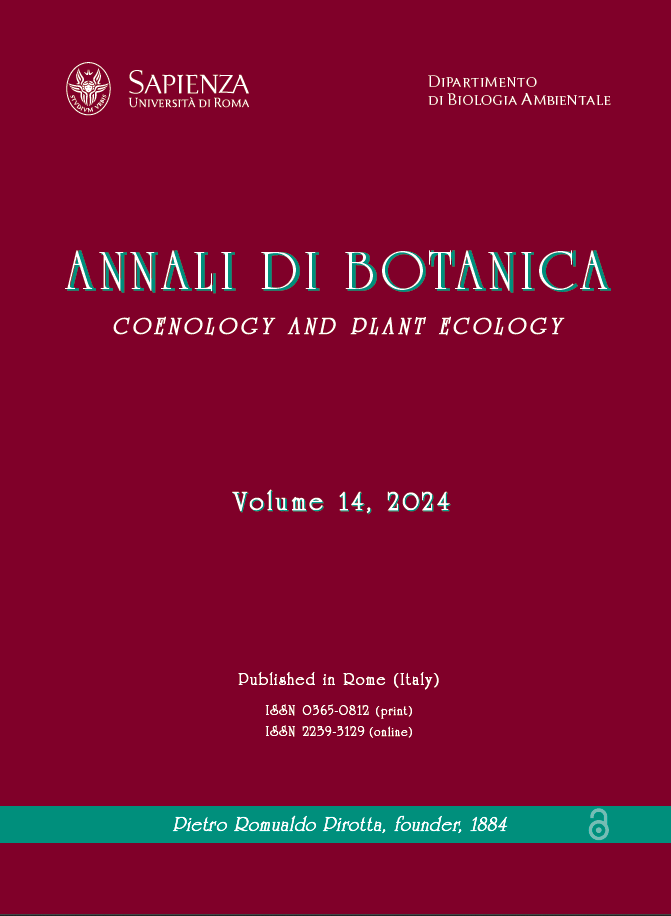Insect pollinators and plant interactions: a taxonomic implications of pollen morphological features in melliferous plants
Pollen study of melliferous plants
DOI:
https://doi.org/10.13133/2239-3129/18336Keywords:
NECTARSAbstract
The current study is the first report on pollen morphology of 17 species belonging to 11 different families that are particularly involved in nectar and pollen collection by bees from southern Pakistan using microscopic techniques. The plants were collected after being foraged by honeybees, identified, and studied. Flowering periods, habit and locality of plants were examined. The pollen grains were then passed through the process of acetolysis, measured and both quantitative and qualitative characters were evaluated. The investigated pollen grains varied in size, shape, colpi/pore and exine sculpturing. The most common type of pollen examined was tricolporate and among the shapes the oblate spheroidal one. Three types of exine sculpturing were observed, psilate, reticulate and echinate. The recorded pollen fertility ranged from 67 to 93 percent, showing that the considered plants are well established in the area. Brassica campestris L, Asphodelus tenuifolius Cav. and Astragalus hamosus L. resulted in the most visited species by honeybees. Our results showed that pollen morphology of the considered plants in the study varies largely. The principal component analysis did not show clusters in relation to specific pollination syndromes and only some strictly phylogenetically related species were close in the graph. For this reason, the pollen grain characters can be considered sufficiently diversified to be used as markers for species identification in melissopalynological analyses. The fact that some of the characters recorded in the area under study resulted quantitatively different from pollen grains of the same species in different geographical areas showed the presence of intraspecific variation. This evidence may provide the possibility of evaluating the geographical provenance of honey from melissopalynological analysis at least in southern Pakistan.
Downloads
Published
How to Cite
Issue
Section
License
Copyright (c) 2024 Shabir Ahmad; Muhammad Zafar, Mushtaq Ahmad, Shazia Sultana, Alessio Papini, Aqsa Abid, Shaista Jabeen, Rozina

This work is licensed under a Creative Commons Attribution-NonCommercial-ShareAlike 4.0 International License.
The copyright for articles in this journal are retained by the author(s), with first publication rights granted to the journal, articles are free to use with proper attribution in educational and other non-commercial setting.

